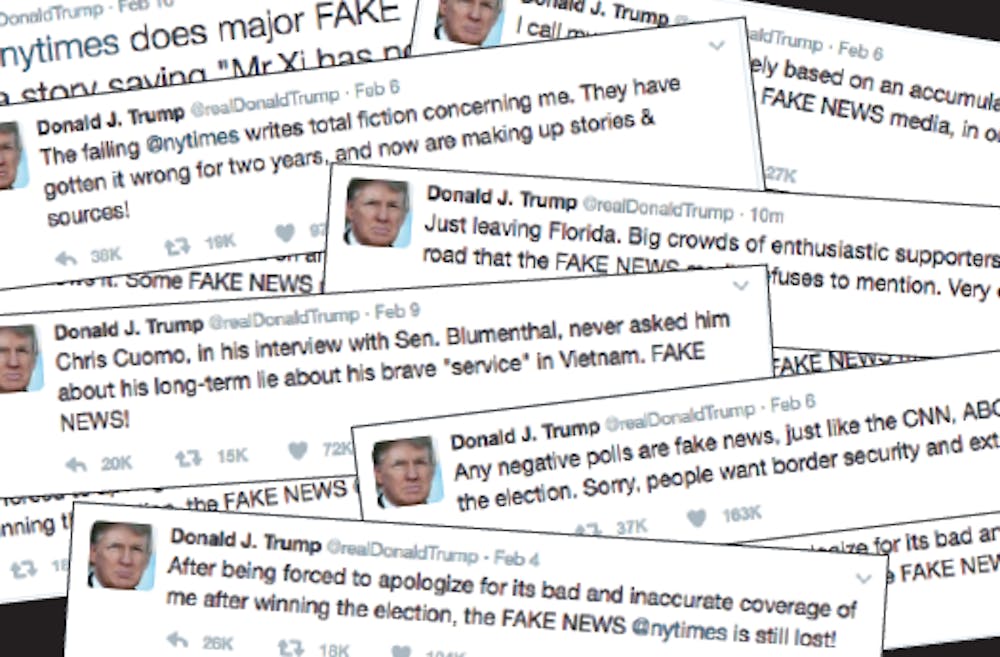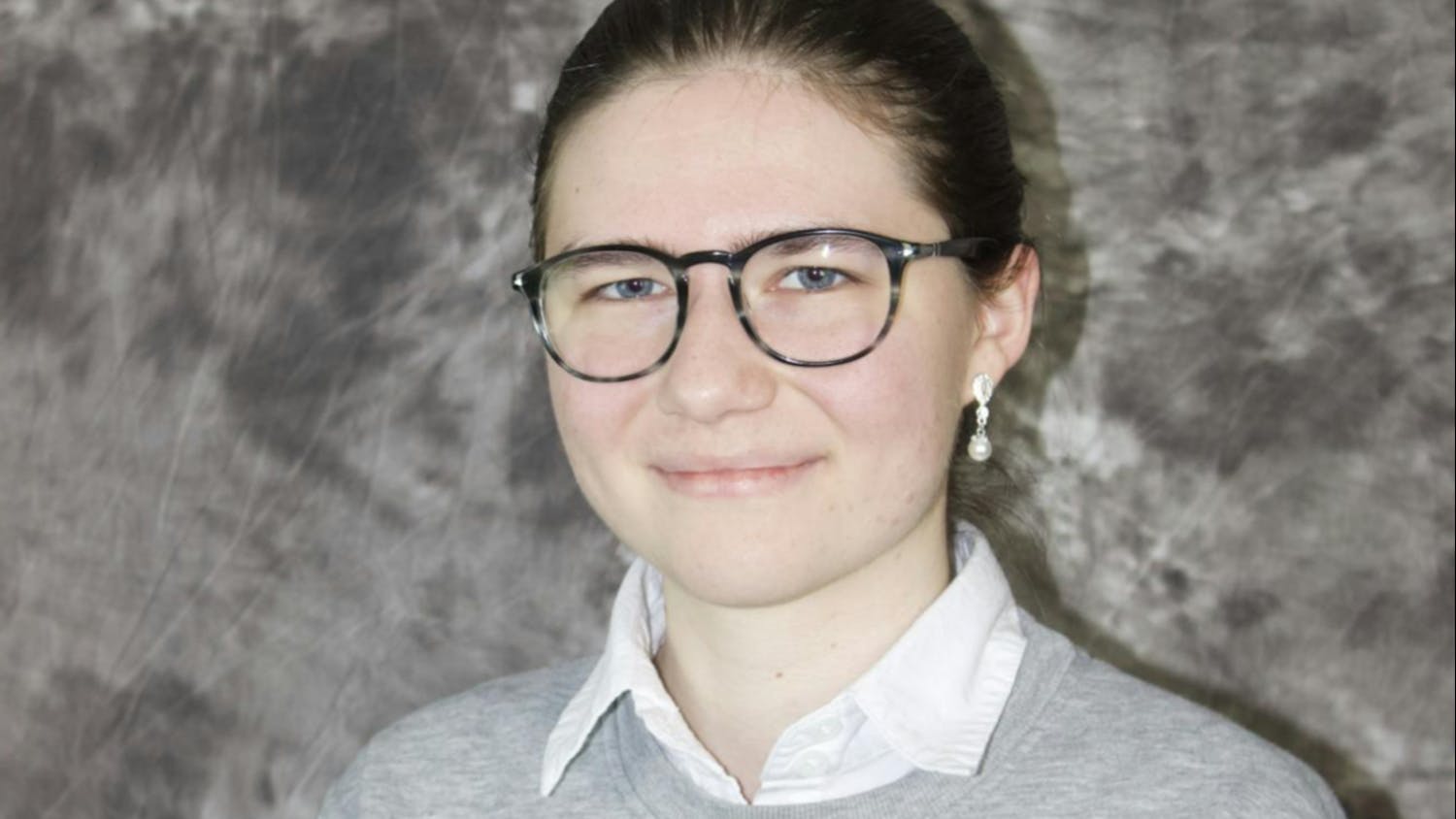Political science professor Harvey Palmer thinks the increased popularity of fake news is a “symptom of changes in the media market.”
Social media has left people unable to distinguish real news stories from fake news stories. Websites such as Facebook and Twitter allow virtually anyone to post content to a large audience. Social media gives the public easy access to fake news from unaccredited blogs and websites, which has caused a dissemination of lies, misinformation and conspiracy theories.
Many UB students tend to get their news from social media. The Spectrum asked more than 200 students where they got their news last November and Facebook and Twitter
Sophia
“News media is not reliable because it’s funded by private corporations and enterprises with their own goals and objectives to make profits,”
The Trump administration has accused media outlets such as CNN and The New York Times of publishing fake news.
“After being forced to apologize for its bad and inaccurate coverage of me after winning the election, the FAKE NEWS @nytimes is still lost!” President Trump tweeted on Feb. 4
Sebastian Gorka, deputy assistant to President Trump, told conservative radio host Michael Medved that the Trump administration will continue to use the term “fake news” to describe the media’s “monumental desire to attack a duly elected president.”
Washington Post reporter Paul Farhi said people paint the media with too broad of a brush and dismiss mainstream media altogether rather than thinking critically about the information being presented.
“’The media is essentially shorthand for anything you read, saw or heard today that you disagreed with or didn’t like. At any given moment, ‘the media’ is biased against your candidate, your issue, your very way of life,” Fahri wrote in a Sept. 2016 Washington Post article.
People tend to be more trusting of sources that align with their ideology or partisanship over expertise or accuracy, according to Palmer.
“The main obstacle is that it isn’t clear that the public wants accurate information. They’re more interested in information that aligns with their world views,” Palmer said.
Distrust of mainstream media outlets is increasingly common.
“Journalism is in trouble. You can’t trust the mainstream [media],” said
Robinson prefers to get his news on YouTube rather than mainstream sources like CNN and The New York Times.
Darby Swab, a graduate arts management student, said while she likes sources such as The New York Times and NPR, she trusts people “fighting the good fight” more.
“I like to get news from people who have made it clear they are fighting for the truth, and I like to get it more from these individual people [rather] than the media. For example, people
Swab thinks liberal sources are more reliable than conservative sources such as Fox News, but “both sides can twist things.”
“There definitely is liberal media that does the same thing, like saying GMOs are a government conspiracy,” Swab said.
During the 2016 presidential election, fake news stories generated
While
“You get these echo chambers where people who are already like-minded share things that they sort of agree with anyways,”
But
“[Fake news] mobilized some of those folks and motivated them to come out to vote [in the 2016 presidential election] a little bit more than they would have otherwise,”
In an extreme example of political mobilization, 28-year-old Edgar M. Welch of Salisbury, N.C., fired an AR-15 rifle at Comet Ping Pong on Dec. 4, 2016.
Welch opened fire at the northwest Washington pizza restaurant after reading a fake news story that said the restaurant was harboring young children as sex slaves as part of a child-abuse ring led by Hillary Clinton.
While no one was hurt, Welch’s actions reflect potentially dangerous consequences of fake news.
Sources are reliable if they are “consistent,” do not have misleading headlines and “help the average person to stand up and know how to make
“I think greater suspicion of sources will really cut down on [fake news’] efficacy and probably even its popularity going forward,” he said.
Maddy Fowler is the assistant news editor and can be reached at maddy.fowler@ubspectrum.com





